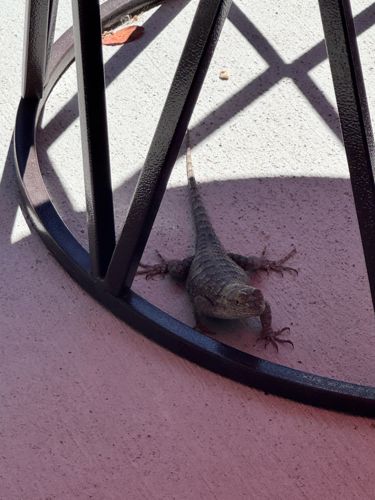Western Fence Lizard
Scientific Name: Sceloporus occidentalis
Order & Family: Order: Squamata, Family: Phrynosomatidae
Size: Typically 5-8 inches (12.7-20.3 cm) in total length, including the tail. The body length without the tail is usually 2.25-3.5 inches (5.7-8.9 cm).

Natural Habitat
Found in a variety of habitats across western North America, including woodlands, forests, chaparral, grasslands, and suburban areas. They prefer areas with abundant rocks, logs, or brush piles for basking and shelter.
Diet & Feeding
Primarily insectivorous, feeding on a wide variety of insects and other small invertebrates including ants, beetles, flies, spiders, and even small scorpions. They are active hunters, ambushing prey or foraging through vegetation.
Behavior Patterns
Western Fence Lizards are diurnal, meaning they are active during the day. They are often seen basking in the sun to regulate their body temperature. When threatened, they typically flee into nearby cover, such as rocks, logs, or burrows. Males are territorial and will display head-bobbing and push-up behaviors to warn off rivals and attract mates. Reproduction occurs seasonally, with females laying clutches of eggs.
Risks & Benefits
Generally harmless to humans. Their bites are not venomous and are typically not severe if they occur. They are beneficial in ecosystems as they help control insect populations. They are also known to carry a spirochete bacterium that, when ingested by ticks feeding on the lizard, clears the ticks of the Lyme disease bacterium, thereby reducing the prevalence of Lyme disease in areas where both lizards and ticks are present.
Identified on: 8/8/2025